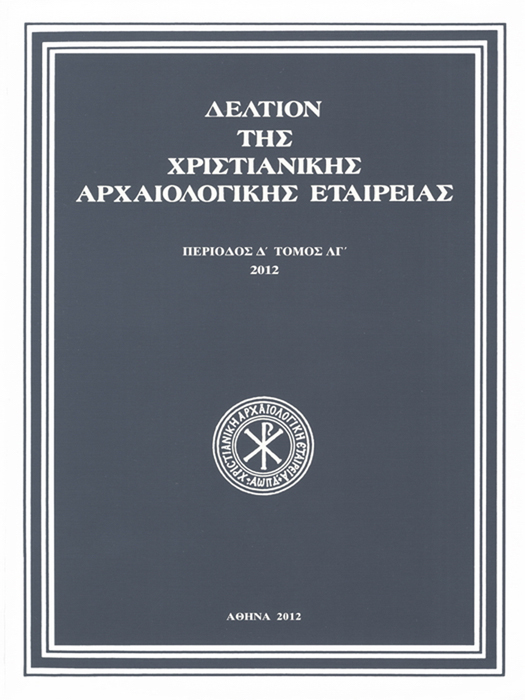Une nouvelle inscription de Cappadoce du règne de Théodore Ier Laskaris

Abstract
The inscription was discovered in the Archangel monastery complex, near the village of Cemil in Cappadocia. Written in a single line on both sides of a conch inside the apse of the south aisle of the church, it refers to the hieromonk Bartholomew and the deacon Leo. Particularly interesting is the existence of the name of the painter, Archigetas, which is one of the earliest surviving signatures of thirteenth-century painters. The inscription is dated 1217/8, and falls in the reign of Theodore I Laskaris, Emperor of Nicaea.
Article Details
- How to Cite
-
KIOURTZIAN, G. (2011). Une nouvelle inscription de Cappadoce du règne de Théodore Ier Laskaris. Deltion of the Christian Archaeological Society, 29, 131–138. https://doi.org/10.12681/dchae.614
- Section
- Articles
The copyright for articles in the journal Deltion of the Christian Archaeological Society (henceforth Deltion) is retained by the author(s), with first publication rights granted to the journal and to EIE/ EKT the right to store and communicate these articles to the public via its information infrastructures. By virtue of their appearance in this journal, articles are free to use with proper attribution for non-commercial uses under a ShareAlike obligation. The Christian Archaeological Society and EIE/EKT retain the worldwide right to reproduce, display, distribute, and use articles published in the Deltion in all formats and media, either separately or as part of collective works for the full term of copyright. This includes but is not limited to the right to publish articles in an issue of the Journal, copy and distribute individual reprints of the articles, authorize reproduction of articles in their entirety in another publication of the Christian Archaeological Society, and authorize reproduction and distribution of articles or abstracts thereof by means of computerized retrieval systems.



